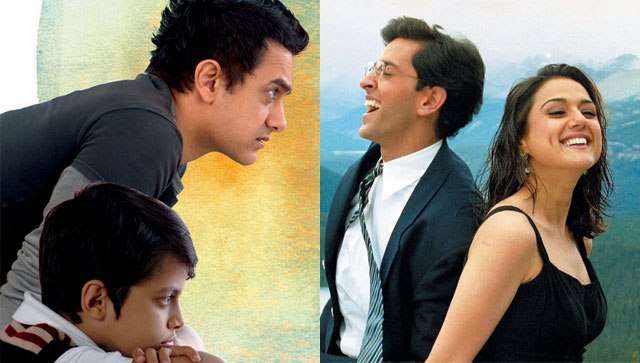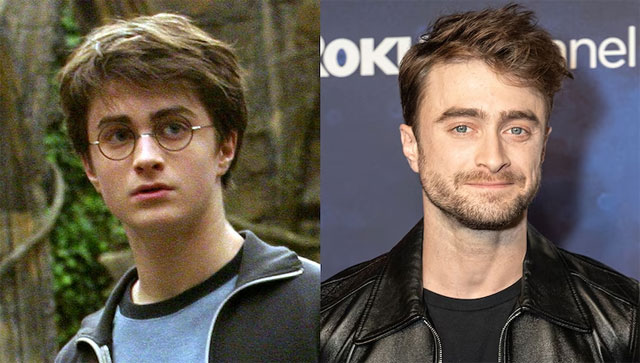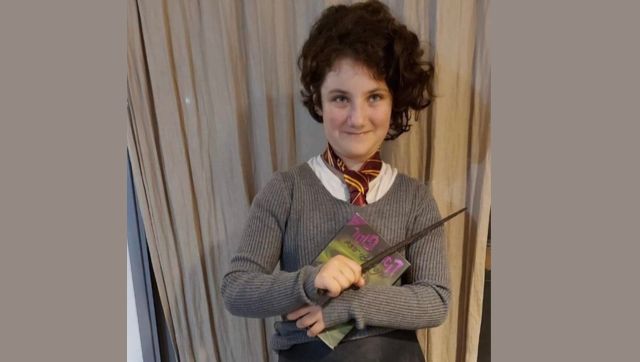In around 1990-91, a young woman named Joanna Rowling was taking a train ride when the idea of a children’s story “fell neatly"into her head. The story would be about a boy wizard, called Harry Potter. Among Harry’s friend’s was a witch: whip-smart, book-clever, and a trooper, called Hermione Granger.
When Rowling’s first book, Harry Potter and the Philosopher’s Stone was published in 1997, it became an instant sensation, launching a pop culture juggernaut that hasn’t slowed down even 19 years later. It has made Rowling, once a single mum struggling to get by on welfare and her job as a teacher’s temp, richer than the Queen of England.
It also made a huge star out of Emma Watson, the actress who played Hermione Granger in the Harry Potter films (alongside the other cast members, of course).
Rowling may have made witches – otherwise presented in literature (and films) as grotesque creatures – cool in the West (and across the world), but in India, there was a figure who was already striving to do that, long before the advent of Pottermania.
Ipsita Roy Chakraverti – India’s leading Wiccan priestess – publicly declared that she was a ‘witch’ back in 1986. Even in the decades post-2000, it is dangerous for a woman to be branded a ‘witch’ – an India Today report just this June pointed out that every third day, a woman is killed in India for being suspected of ‘witchcraft’. The statistic doesn’t account for the women who aren’t killed, but are tortured, beaten, raped or otherwise humiliated on (trumped up) accusations of being witches.
So when Chakraverti ‘came out’ in 1986, there was quite the backlash. But as she tirelessly championed the healing power of Wicca, worked to bust the myths around it and campaigned to empower women being persecuted in the name of black magic, she transcended those negative perceptions. Thirty years later, she’s the most respected authority on the subject of Wicca.
In an interview with Firstpost, Chakraverti spoke about how perceptions of witchcraft – once considered a powerful positive force – were twisted into something dark and malicious, how these perceptions were used against women, and the empowering nature of Wicca.
Excerpts:
It’s been 30 years since you ‘came out’ as a witch in 1986. Have people’s perceptions of Wicca and witchcraft evolved in that time?
The term ‘come out’ I think is somehow wrongly interpreted by society. Let us say the time was right in this country. Society was at a low. Women were being hounded. So I emerged as a kind of Joan of Arc with a message about the truth of Wicca! I feel that there has been a lot of change in the last 30 years. Today, the word ‘witch’ is almost fashionable in certain quarters. It is understood in all seriousness by the intelligentsia.
You once said Wicca was the original feminism. Today, when ‘feminism’ is thought of as a ‘dirty word’ and there seems to be so little understanding of what it actually entails, could you please tell us how Wicca empowers women?
Feminism should not be a dirty word because in our own culture and history, women have showed their strength, their courage and stood up for themselves and their sex in a patriarchal society. It may not have been purely a gender issue but as individuals, they have shown the Shakti in women. Take the examples of women like Noor Jehan, Khana, Rani of Jhansi , even Indira Gandhi. They may not have called themselves daayans, but am sure others did and they would not have minded.
How did ‘dakini vidya’ go from being revered to being something that is used against women, to persecute them?
Wicca goes back a long time, to more than 25,000 years when man first started worshipping the Mother Goddess. That was a time when our ancestors were worshipping the female deity. Statues and carvings found the world over have given evidence of that. She was the complete woman, both warrior-like and strong, as well as compassionate and caring. She was the enchantress, the warrior, stateswoman, scholar, mother, wife and daughter. She epitomised strength of a woman complete in herself. Ancient Egypt knew her as the goddess Isis, she was Ishtar in Babylonia, Arinna in Turkey, Tara in Tibet and Ix Chel by the Mayans. In China, she was Kuan Yin, in Sumeria, she was called Inanna, while for the Navajo tradition, she was called Changing Woman. From pre-Vedic times, India has worshipped Durga and Kali. Every culture and every civilization around the world has worshipped the female deity, who was a form of the great Mother Goddess. It was she, who was the first Witch.
With time came organised religion, led by a patriarchal system. A new class of priests arose, those who laid down strictures and norms barring the women-led or priestess-led ways of old. Slowly, the goddesses of old were either demolished, or projected as consorts of the male god, far more acceptable to a new class of priests. And the witch-goddesses of old began to be projected as the demons of the new. With that, came persecution and the maligning of an old tradition, and the abuse of women in the name of ‘witchcraft’.
You’ve been very vocal about the role patriarchy and organised religion played in tarnishing the repute of Wicca. How were practices that were essentially positive in nature steadily given this negative hue and then made fearful in the eyes of people?
All through history, the witch persecution has been a way to repress the individuality in women. It can be comparable to Nazism in which multitudes of human beings were subjected to torture by their fellows, mostly men. Strangely enough, in witch-persecution of the Middle Ages, the women were not condemned by the rabble, but rather by the most intellectual and religious men of their day.
During the 14th through the 17th centuries, an estimated half million women or more were killed for witchcraft. Some historians claim that it was 9 million. It is thought that the persecution of witches became so violent at this time because they were being made scapegoats for certain evils which were affecting European society. Organised religion was being threatened by peasant rebellions. In order to keep its control over the population, it needed scapegoats. It was easy to fix on certain women and call them the perpetrators of evil.
The witch hunt became a means of relieving the ruling class and the Church and putting the blame on the individual who called herself a Wiccan. People were suffering from diseases like the plague. There was a great fire in England. The populace doubted the magic in organised religion. So it needed a common enemy. The witch was a handy tool. They were also portrayed in children’s fairy tales and other books as the source of evil. The orthodox world was teaching the children early. Superstition was easy to rouse.
We’ve got so much symbology created by fairytales around witches – the black robes and pointed hats, the grotesque looks and broomsticks, the big cauldrons. What do you think of all this? Have witch icons been mis-appropriated by those who wanted to paint witchcraft in a negative light?
The very idea of a Wiccan woman, strong, independent and powerful, was abhorrent to orthodox society and their norms. It is no wonder that everything associated with these women was turned into symbols of evil.
The very word, ‘witch’ is itself a distortion of the word Wicca. Wicca is from the old English word ‘wicce’ or craft of the wise. It also has traces in it of ‘wik’ the Teutonic word meaning transformation or ‘to bend’. Wiccan women were the first healers, counsellors, priestesses and leaders. Another example of this distortion is how the name of the Greek goddess Diana, one of the patron goddesses of Wicca, became twisted to ‘daayan’, in our part of the world. Something very positive, and sacred in one part of the world, was turned to portray something evil and dark in another.
I have always been amused by how our fairy tales always projected witches as ugly women with warts and hooked noses. The truth is that the Wiccans of old were believed to be very beautiful women. They were supposed to have known many secrets hidden in Nature around them which would make the skin glow, the hair lustrous and keep the body supple and lithe. But beautiful women do not evoke fear. Maybe jealousy – and rage, if it cannot be possessed. And then came the fairy tales, which twisted things around, to project these women as ugly hags. Not very different from our Hindi television serials even today, isn’t it?
You took on the Bollywood film Ek Thi Daayan, and said at the time: “Women cannot be portrayed as sex objects, items girls or daayans”. Do you feel that these are really the only “extremes” society sees women who do not conform to the norm as fitting into — they’re either evil and to be persecuted, or to be sexualised and lusted after?
I cannot speak for all societies, but at least from my experience while working in this country, I feel that that is how women who are individualistic and independent minded are viewed.
Please tell us about your work with The Young Bengal Brigade and the Wiccan Brigade, the groups you founded.
I started the Young Bengal Brigade to delve into ancient cultures and forgotten traditions of the esoteric from around the world. Our members are of all ages, and from all walks of life. Some may be as young as 20, while some may be in their sixties. We have members from all walks of life – academia, doctors, lawyers, corporates, business people. What brings us together is the desire to quest forward and delve into what lies beyond. To seek knowledge which has been forgotten. We study subjects like Egyptology, the Sufi way, Taoism, Native American traditions, the Hebrew tradition, the Yogini Cult and many more. And of course at the root of it all, is our Wiccan learning. That is what forms the foundation.
I started the Brigade 10 years ago from Kolkata. At that time, we had only the Wiccan Brigade. Over the years, we have grown in numbers and in our areas of work. Today, we are the Young Bengal Brigade, of which the Wiccan Brigade is one major wing.
Read Firstpost’s review of Harry Potter and the Cursed Child: JK Rowling casts a neat time-travel spell with this eighth bookAbout 6 years ago, I started our Psychic Investigation wing, to explore sites which have a reputation for being haunted. We would use not only mechanical tools, but also our own senses and intuitive powers to try and discover what lay there. Was there spirit activity, or not? In course of our activities, we have visited places like Bhangarh Fort in Rajasthan, a heritage hotel in Puri in Orissa, a shed, made into a museum for old Durga idols, in Kolkata. We were the first to bring forth the orb phenomena in India – to capture spirit manifestations as luminous orbs of light, suspended in mid air. In the west, this was first done by two researchers, Heinemann and Ledwith, hailing from NASA and the Vatican.
Our study involves both academic work as well as practical experiment and experience. As part of that, we are currently working on something extremely interesting – recreating Thomas Edison’s famed Spirit Machine. At the time of his death, the inventor was believed to have created a blueprint and a model of a device which could contact the other world. It used, among other things, the power of a photoelectric cell, focused beam of light, a mirror and rotating cylinders. Some say he even applied for a patent, but following his death, much of this was lost – or covered up? I discovered many details about this apparatus when I was looking into old papers delving into spirit research. Edison had believed in the spirit world, so much so that in an interview, he had told the Scientific American magazine that if our personality survived death, then it was logical to assume it retained memory, intellect and other faculties and would be able to affect matter. He had further told the interviewer, B.C. Forbes, that if a sufficiently delicate instrument could be devised, it would be able to record something from the afterlife.
We started work on the fundamentals of his premise, and so far, we have achieved startling results. Photographs have shown misty faces appearing , close to people. Special audio recorders have captured voices of loved ones who have crossed over. In the coming months, we will take this further.
You campaigned against the persecution of women in the name of witchcraft 30 years ago. Is the threat still very real for women?
The attitudes of the opposition has changed, or maybe they find it wiser to be careful. Ours is a county beset with superstition and that is one of the handles interested lobbies used for personal gain and gratification. But those who were once persecuted have over the years come together and they have found strength and a new courage – a refusal to take abuse. The courage to speak out. Today, they are stronger than the opposition.
Also read: Practical magic – Maneka Sorcar on carrying forward her father PC Sorcar Jr’s legacy

)




)
)
)
)
)
)
)
)